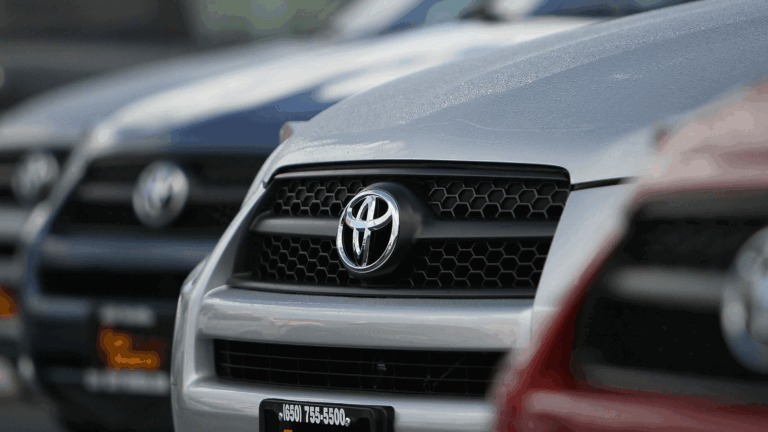How To
John Paul, AAA Northeast’s Car Doctor, answers a question from a reader having trouble with the rims on his 2009 RAV4.

Q. We have a 2009 Toyota RAV4 with about 220,000 miles. We’re the original owners of the vehicle and it came with steel rims. The design of the rim is such that it can trap water, causing it to rust and leak. It has gotten so bad that it now has caused a slow leak in a couple of them. The soapy water test has proven this to be the case. The car that is worth less than $2,000 and doesn’t use more than a half quart every 5,000-mile oil change. What are the options to fix this? I expect that I will need a rebalance with any repair. At the price they are charging to fix the rim, I could buy new steel rims or used OEM, but that is on the order of $150 each, give or take. Is there a low-cost solution to this issue? It would be terrible to discard a car because of a set of rims failing.
A. The first place to start is to remove the tires and clean up the rusty surfaces. At the same time the technician can check the integrity of the wheels. Once clean then use a bead sealer (TECH tire products makes one). This sticky gluelike substance will form a bond and seal the wheel to the tire. The only other option is replacement wheels. One other possible option is buying the wheels and tires as a complete package ready to be installed. It will be costly, perhaps $1,500-$2,000, but if your RAV4 is in good condition, spending $2,000 to keep the vehicle on the road for a few more years could be money well spent.
Q. I asked your opinion on the new Nissan Frontier and the GMC Canyon a few months ago. I traded in my 2012 Nissan Frontier for a loaded 2025 Nissan Frontier a few weeks ago. I am very satisfied so far with the smooth 9-speed transmission, and the 3.8-liter V-6 engine has a lot of get up and go. My wife loves the new Frontier, with heated, very comfortable seats and a heated steering wheel. The 2012 Nissan had a 6-speed and my wife did not like to drive it, even though she taught me to drive a manual many years ago. I want your opinion on how to break in the engine for the next few weeks, months, and miles.
A. I recently evaluated the Nissan Frontier and found it to be a no-apologies truck – solid, comfortable and capable. In my opinion Nissan did a very good job of combining comfort with a truck that could handle towing and off-road treks. As for break-in, for the next few thousand miles, vary the engine speeds and avoid using cruise control and hard acceleration when possible. Even though the first oil change is not scheduled until 7,000 miles, I would do it early, around 3,000 miles. From that point on, follow the maintenance schedule and enjoy your new truck.
Q. While visiting his family in Pennsylvania recently, my grandson parked his 2025 Hyundai Elantra at their home overnight. Despite the fact that no one in his family had experienced this, the following morning he discovered rodents had chewed the wiring harness to his alternator. Fortunately, he was able to jury-rig the wiring and travel back home. However, the entire harness had to be replaced by the dealer at a cost of a few thousand dollars. While researching the issue my grandson read that some new cars use a soy-based plastic to cover wiring harnesses, which explains why his vehicle was targeted. In my own 2003 Chevy truck, which sits for a while at times, I use a rodent repellent spray to prevent similar rodent activity after I noticed damage to the insulation under the hood. Thoughts on this?
A. Every vehicle manufacturer is using some form of soy-based poly wiring insulation. Does the soy-based wiring attract rodents? I don’t believe so since it is not a food product. Manufacturers switched from petroleum-based products to soy-based products for both environmental and cost purposes. I am hardly an expert on rodents, but I believe the primary reason for rodents chewing on car wires is their natural behavior of gnawing on objects to keep their teeth trimmed. Soy-based wiring may taste better than petroleum-based insulation, but it’s not the sole nor primary cause of the problem. Rodents have been crewing on wiring for decades. I also believe with development we are pushing rodents out of their natural habitat. A vehicle with a warm engine bay and plenty to chew on is most likely the issue. Depending on insurance coverage this type of damage is usually covered, less the standard deductible.
John Paul is AAA Northeast’s Car Doctor. He has over 40 years of experience in the automotive business and is an ASE-certified master technician. E-mail your Car Doctor question to [email protected]. Listen to the Car Doctor podcast at johnfpaul.podbean.com.
Sign up for the Today newsletter
Get everything you need to know to start your day, delivered right to your inbox every morning.
